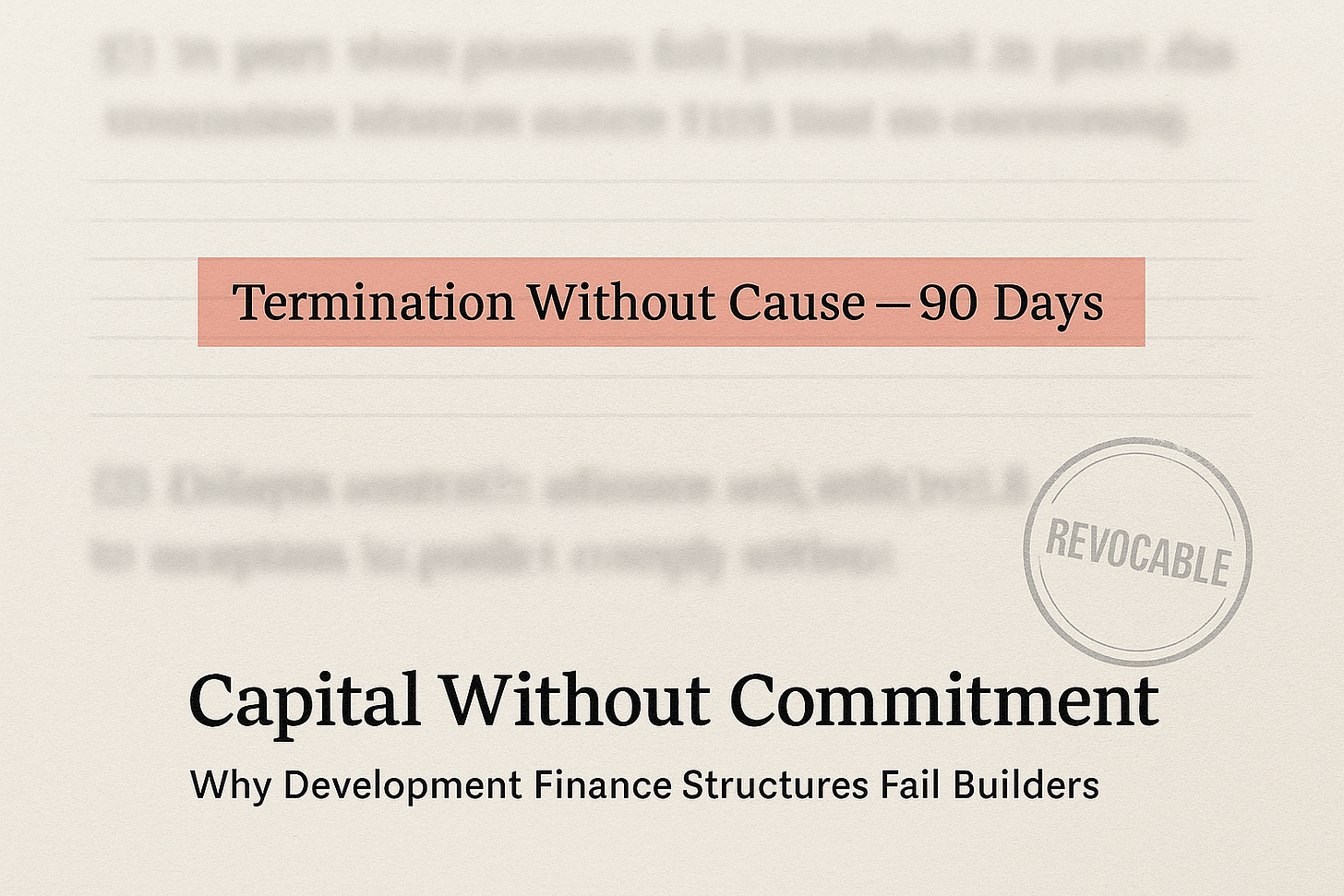Capital Without Commitment
Why Development Finance Structures Fail the Builders They Fund
Development finance in Africa is often described as “risk capital.” But too often, the risk sits entirely with the operator, while funders retain full discretion over whether commitments continue. After 18 months of negotiation on a blended capital fund, I saw firsthand how a single clause could destabilize an entire platform. This piece explores why these structures fail builders — and what must change if institutional capital is to support, not suffocate, the ecosystems it claims to serve.
I. CORE THESIS
Development finance and philanthropic institutions increasingly deploy capital through administrative systems whose internal incentives — compliance, reputational protection, and process integrity — often work against the conditions required to build resilient platforms in emerging markets.
This creates a structural disco nnect. The capital appears supportive, but behaves conditionally. It moves through complex diligence and program design processes, but remains subject to revocation — even after full compliance by the operator.
These controls didn’t appear in a vacuum. High-profile failures — from Abraaj to other distressed managers — forced DFIs to reevaluate their governance frameworks. But the response hasn’t just been cautious — it’s become overcorrective. Instead of targeting risk at the source, capital structures now transfer risk wholesale to operators, while preserving flexibility for institutional funders.
This dynamic is amplified in blended capital structures. These vehicles combine concessional and commercial capital in an effort to de-risk innovation and crowd in private investment. But in practice, they introduce misaligned timelines, governance friction, and more decision-makers. Rather than resolving the misalignment between patient capital and operational reality, blended approaches often multiply the number of stakeholders with veto power — increasing rigidity in decision-making and fragility in execution.
II. OPERATIONAL CONSEQUENCES
Development capital is designed to fill gaps that commercial capital won’t touch — long-cycle initiatives, uncertain regulatory environments, or systems work across fragmented markets. But the deployment model often assumes certainty and control from the start:
• Disbursements tied to fixed program cycles
• Standardized impact frameworks with predefined metrics
• Internal compliance protocols that prioritize reversibility over continuity
Operators engaging with this model are typically required to accept significant structural redesigns: dual-stack entities, bifurcated governance, segmented staff models, and customized reporting systems. These steps are necessary to meet funder requirements — but they don’t protect operators from downstream risk.
Much of this depends on which capital sleeve is engaged. DFIs often have catalytic windows designed to take more risk, alongside generalist FoF capital that demands more traditional governance. But in practice, these distinctions are often blurred. Even catalytic capital is now tied to compliance-heavy disbursement cycles and discretionary exit rights — diluting its role as a genuine de-risking tool.
In one case, after 18 months of negotiation, a fund was required to accept a 90-day, no-cause termination clause introduced during final contracting. This was despite full alignment with the donor’s operational and impact framework — including a major restructuring that involved establishing a non-profit group entity, segmenting the operating workforce, and creating dual governance systems to satisfy compliance optics.
The operator — a first-time GP with a strong thesis but a nascent track record — had no real leverage.
Walk away from the nine-figure commitment, or accept the risk and try to execute anyway.
What would you do?
This is where most commentary on development finance stops — at the anecdote. But the real issue is structural. To see why, and what can be done differently, you have to look at the incentives, the governance model, and the mechanics of capital itself.
👉🏾 The rest of this essay is for paid subscribers. I unpack:
• How DFI incentives diverge from operators
• Why blended models amplify fragility instead of reducing it
• The deeper governance roots of the problem (Burnham, managerial class logic)
• Practical structures operators can use to protect execution
Upgrade to LUMI Brief Pro for the full analysis.


